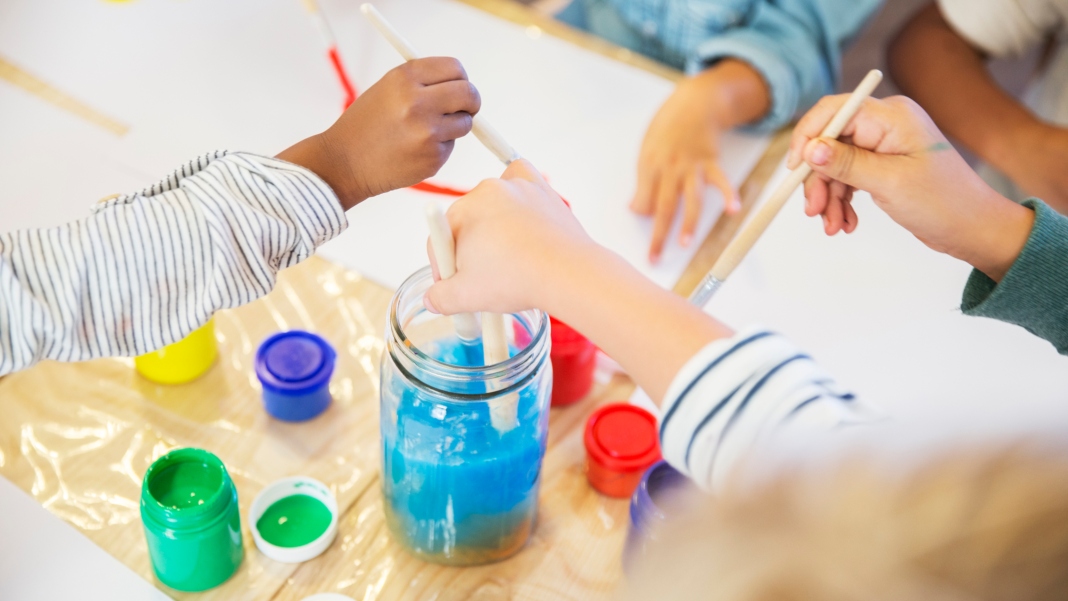
Getty
We don’t need students making lists of the “good and bad reasons for slavery.” Nor do we need worksheets with racist rhetoric targeting Native Americans as tools to teach students what derogatory statements sound like. When it comes to teaching about racism, intolerance and diversity, with no structured or honest approach to a history of our country’s problematic and traumatic relationship with racism, most educators are lost when it comes to the topic and how to teach about it in a way that conveys the truth without creating more trauma.
HuffPost reports San Jose, CA teacher Aeriale Johnson is starting with baby steps with her kindergarten class at Washington Elementary School. In a tweet posted during the first week of school, Johnson shared her first project with the class: skin-color paint, a project that teaches students it is OK to see color, celebrate differences and share how they affect our presence in the world. In addition to the paint, Johnson posted images of a bell hooks book titled Skin Again and another one titled The Skin You Live In, along with a conversation prompt that asked, “In what ways does the color of our skin influence who we are and what place we are in the world?”
The post went viral with over 1000 likes and retweets from educators who expressed they’d be re-creating the lessons in their own classrooms. Johnson shared some details about how to get started using a base of brown or peach. She noted that the project wasn’t that different from a shopping trip at a beauty supply store:
“Then, in small groups, added white, yellow, red, dark brown and/or green to get to just the right hue.”
“They looked like they were at Ulta trying to find foundation.”
Ironically, diversity in skin colors and tones is something that the beauty industry is just beginning to embrace with cosmetic lines like singer Rihanna’s high-successful beauty line Fenty Beauty. With praises from adults shopping for these products, it makes so much sense to teach children early about celebrating differences and building self-confidence about their individual beauty and how their looks affect the way they are treated in the world.
HuffPost reports these lessons are important since children begin to recognize bias at a very early age:
“Studies have shown that skin color bias largely impacts the self-esteem of children of color, especially among African-Americans, and can also influence their educational achievement. In fact, children perceive biases toward their skin tone as early as 3 years old. This only gets worse in college.”
In the book Anti-Bias Education for Young Children and Ourselves, authors Louise Derman-Sparks and Julie Olsen Edwards highlight activities such as these as instrumental in bridging the gap between classrooms and social awareness. They point out that part of socializing children in a healthy way includes preparing them to think critically when encountering prejudice:
“Thinking critically about stereotypes, prejudice, and discrimination takes away barriers to comfortable and respectful interactions with a wide range of people and gives children a tool to resist negative messages about their identities.”
It’s one thing to have these conversations in the home, but teachers like Johnson are truly bridging the gap between home and school to support children in self-love and love for the differences in the community.









